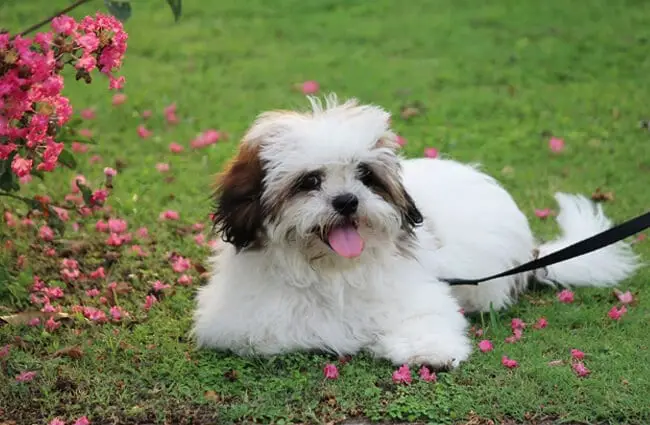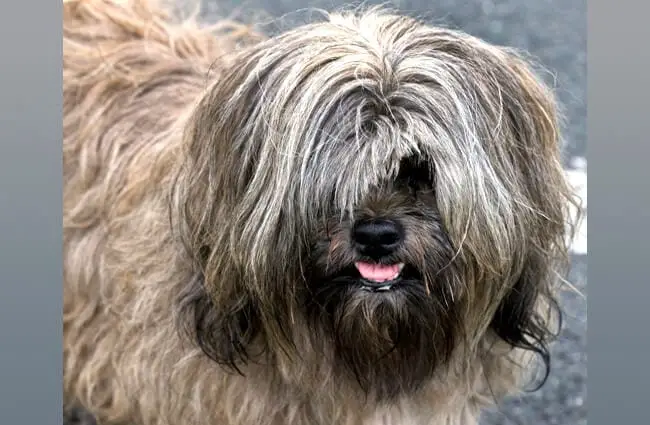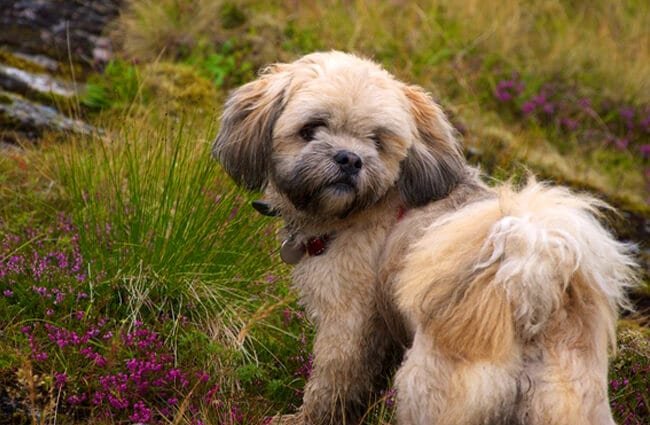The Lhasa Apso, a small but spirited breed, holds a fascinating place in both canine history and human culture. Originating from the high altitudes of Tibet, this long‑haired companion developed as a sentinel in monasteries and palaces. More than just a pretty face, the Lhasa Apso boasts a resilient nature, a surprisingly independent streak, and a story interwoven with ancient traditions.

A Glimpse into the Lhasa Apso’s World
Origins and Habitat
The Lhasa Apso’s journey begins in the harsh, mountainous regions of Tibet, specifically around Lhasa, the city from which the breed derives its name. Historically, these dogs were not simply pets; they served a crucial role in Tibetan monasteries, acting as watchdogs and providing warmth within the cold stone buildings. Their thick coats provided insulation against the elements, and their alert nature made them excellent guardians. The habitat profoundly shaped the breed’s physical characteristics and temperament. Because of its historical range, finding a truly wild Lhasa Apso is extremely unlikely. The breed exists today almost entirely as a domestic companion.
Physical Characteristics
The Lhasa Apso is a relatively small breed, typically standing between 10 and 11 inches tall and weighing between 12 and 18 pounds. Its most defining feature is undoubtedly its long, dense, double coat, which requires consistent grooming. The coat comes in a variety of colors, including gold, honey, red, black, and parti‑color combinations. Beneath the flowing outer coat lies a soft undercoat, providing crucial warmth. They possess a sturdy build, a slightly elongated muzzle, and dark, expressive eyes. The tail is carried curled over the back, adding to their regal appearance.

Temperament and Behavior
Lhasa Apso dogs are known for their confident and independent personalities. They can be reserved with strangers, a trait honed by their historical role as watchdogs, but are deeply loyal and affectionate with their families. While not overly energetic, they enjoy moderate exercise and playful interaction. Their independent nature can sometimes translate into stubbornness during training, requiring patience and consistency. Early socialization is key to ensuring they develop into well‑adjusted companions. They are intelligent dogs but may choose when they want to obey commands.
Diving Deeper into Lhasa Apso Biology and Behavior
Diet and Nutritional Needs
Historically, the Lhasa Apso’s diet in Tibet would have been quite simple, likely consisting of scraps from the monastic kitchen, supplemented by whatever they could forage. Modern Lhasa Apso dogs thrive on high quality commercial dog food appropriate for their age and activity level. A balanced diet should include protein, carbohydrates, fats, vitamins, and minerals. Portion control is crucial to prevent obesity, which can put strain on their small bodies. Avoid giving them table scraps, as these can lead to digestive upset.

Reproduction and Life Cycle
Lhasa Apso dogs typically reach sexual maturity between 9 and 12 months of age. The estrous cycle in females lasts approximately 21 days, with peak fertility occurring around days 9 to 14. Gestation lasts around 63 days, resulting in an average litter size of four to six puppies. Puppies are born blind and helpless, relying entirely on their mother for care. They begin to open their eyes around two weeks of age and are typically weaned by six to eight weeks. Proper prenatal and postnatal care are vital for both the mother and the puppies. Responsible breeding practices emphasize health testing and genetic diversity to minimize the risk of inherited conditions.
Ecological Role and Interactions
As a domesticated breed, the Lhasa Apso’s direct impact on the ecosystem is limited. Historically, within the monastic communities of Tibet, they played a role in controlling rodent populations. Today, they primarily interact with the human environment. Their interactions with other animals are generally governed by their socialization. Early exposure to other dogs and pets can help them develop positive relationships. However, their strong guarding instincts may lead them to be wary of unfamiliar animals. They are not typically predatory towards other animals.

Lhasa Apso and Human Culture
Historical Significance
The Lhasa Apso holds a significant place in Tibetan culture and history. They were considered sacred dogs, believed to be the reincarnations of the Khampa people’s lion‑like deities. They were kept within monasteries, serving as companions to monks and acting as watchdogs. The breed was presented as gifts to visiting dignitaries, eventually making its way to Europe and America in the early 20th century. This history has instilled in the breed a sense of dignity and independence.
The Breed Today
Today, the Lhasa Apso is a popular companion animal around the world. They are cherished for their affectionate nature, their striking appearance, and their independent spirit. They participate in dog shows, agility trials, and other canine activities. However, it is crucial to remember that they are a breed with specific needs. Their long coat requires regular grooming, and their independent nature requires patient training and socialization.

For the Aspiring Zoologist and Wildlife Enthusiast
Encountering a Lhasa Apso in the Wild (and What to Do)
The likelihood of encountering a truly wild Lhasa Apso is extremely low. However, if you happen to encounter a dog resembling a Lhasa Apso while hiking or exploring, it is likely an escaped or abandoned pet. Approach cautiously, avoiding direct eye contact. If the dog appears friendly, speak in a calm and reassuring voice. Avoid sudden movements. If the dog appears fearful or aggressive, maintain a safe distance and contact local animal control authorities. Never attempt to handle a stray dog without proper training and equipment.
Caring for a Lhasa Apso in Captivity (Zookeeping Considerations)
While uncommon in zoos, a captive Lhasa Apso would require a carefully managed environment. Their long coat necessitates daily brushing to prevent matting and skin issues. A climate controlled enclosure is vital to protect them from extreme temperatures. Mental stimulation is crucial to prevent boredom. Puzzle toys, scent work, and interactive play sessions would be beneficial. Socialization with other dogs should be carefully monitored. A balanced diet formulated for small breeds is essential. Regular veterinary checkups are vital to maintain their overall health and well‑being.

The Lhasa Apso, a breed steeped in history and brimming with personality, continues to captivate hearts around the world. From its origins in the high altitudes of Tibet to its present‑day role as a beloved companion, this resilient and independent breed offers a unique and rewarding experience for those who appreciate its distinctive charm.






![Red Angus Closeup of a beautiful Red Angus cowPhoto by: U.S. Department of Agriculture [pubic domain]https://creativecommons.org/licenses/by/2.0/](https://animals.net/wp-content/uploads/2020/03/Red-Angus-4-100x75.jpg)

